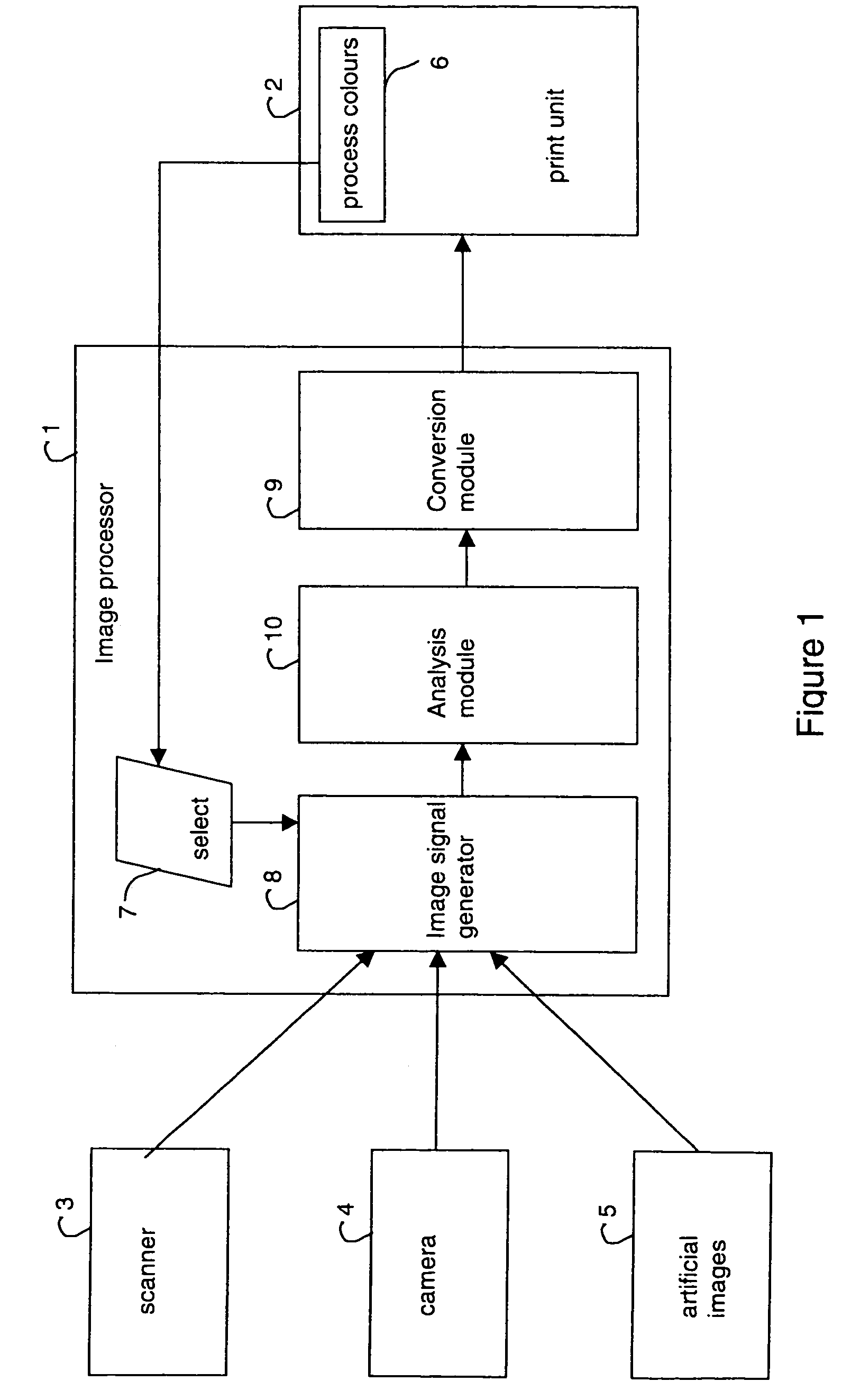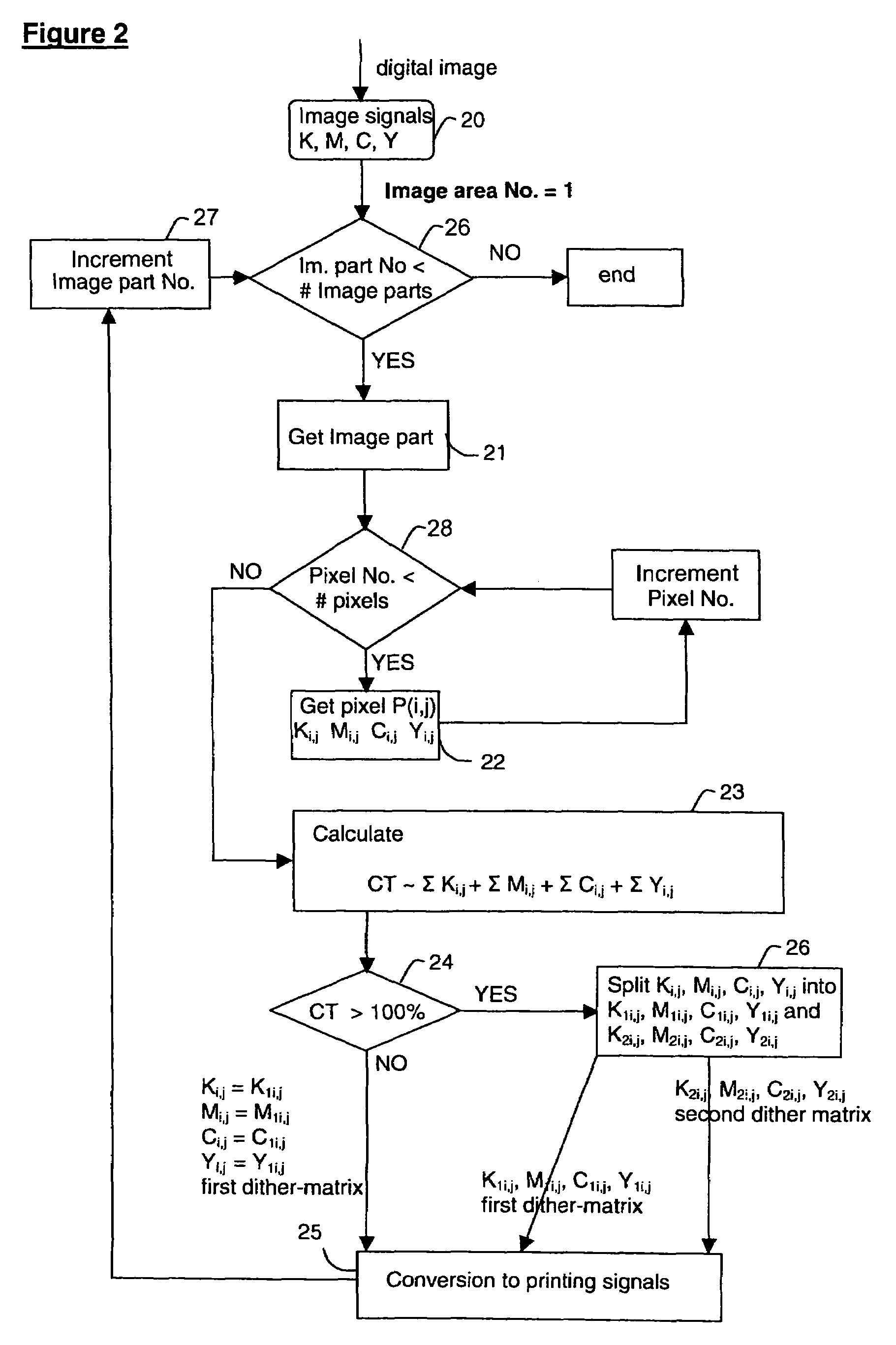System and method for processing a multi-colour image
a multi-colour image and processing system technology, applied in image data processing, recording apparatus, printing, etc., can solve the problems of moiré pattern visible distortion, sensitivity to creating moiré pattern, and multi-colour image rendered moiré pattern distortion, so as to avoid interference pattern and limit graininess
- Summary
- Abstract
- Description
- Claims
- Application Information
AI Technical Summary
Benefits of technology
Problems solved by technology
Method used
Image
Examples
example
[0049]With reference to the drawings, by means of an example it will be described how a digital multi-colour image can be reproduced employing a halftoning technique according to an embodiment of the present invention. Suppose for instance that an original multi-colour image is scanned at a resolution of 600 dpi×600 dpi resulting in a digital multi-colour image being composed of three separation images respectively of the colours red (R), green (G) and blue (B). The image signals associated with the respective separation images specify for each pixel of the respective colour an image density value using an 8-bit representation. An 8-bit representation enables to define 256 levels each corresponding with a particular tonal value. This digital multi-colour image is forwarded to a digital colour printing system. Suppose a selection of 4 process colours is made being black (K), cyan (C), magenta (M) and yellow (Y). The image signal generation module (such as 8 in FIG. 1) of the image pr...
PUM
 Login to View More
Login to View More Abstract
Description
Claims
Application Information
 Login to View More
Login to View More - R&D
- Intellectual Property
- Life Sciences
- Materials
- Tech Scout
- Unparalleled Data Quality
- Higher Quality Content
- 60% Fewer Hallucinations
Browse by: Latest US Patents, China's latest patents, Technical Efficacy Thesaurus, Application Domain, Technology Topic, Popular Technical Reports.
© 2025 PatSnap. All rights reserved.Legal|Privacy policy|Modern Slavery Act Transparency Statement|Sitemap|About US| Contact US: help@patsnap.com



